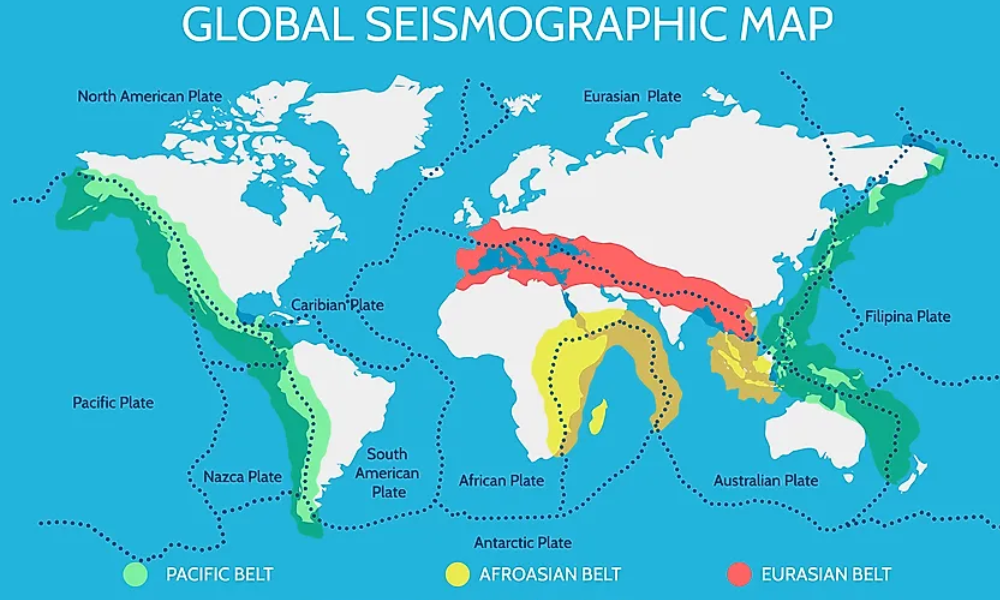
Earthquakes are natural phenomena that have fascinated and terrified humans for centuries.
These geological events are the result of the Earth's tectonic plates constantly moving, colliding, and sliding past each other.
While earthquakes can occur almost anywhere on the planet, there are certain regions that are more prone to seismic activity than others.
In this blog post, we will explore some of the most seismically active areas in the world and the geological factors that make them so.
| Are you a Tax Lawyer in USA? 👉Transform Your Brand: Click for Metamorphosis👈 |
One of the most seismically active regions on Earth is the Pacific Ring of Fire.
This horseshoe-shaped zone encircles the Pacific Ocean and is characterized by frequent earthquakes and volcanic eruptions.
The Ring of Fire is home to about 75% of the world's active and dormant volcanoes and experiences approximately 90% of the world's earthquakes.
The intense seismic activity in this region is primarily due to the convergent boundaries of several tectonic plates, including the Pacific Plate, North American Plate, Eurasian Plate, and others.
As these plates interact, they create immense pressure, resulting in frequent earthquakes and volcanic eruptions.
Countries like Japan, Indonesia, New Zealand, and the west coast of North and South America are particularly vulnerable to seismic events within the Ring of Fire.
The Himalayan region, spanning across countries like India, Nepal, Bhutan, and Pakistan, is another hotspot for seismic activity.
This area is prone to powerful earthquakes because it sits at the boundary where the Indian Plate collides with the Eurasian Plate.
The ongoing collision between these two massive tectonic plates causes intense pressure to build up over time, leading to devastating earthquakes like the 2015 Gorkha earthquake in Nepal.
In the United States, the San Andreas Fault Zone is notorious for its seismic activity.
This fault system stretches approximately 800 miles through California, forming the boundary between the Pacific Plate and the North American Plate.
The grinding of these plates against each other produces frequent earthquakes, some of which have been catastrophic in the past, like the 1906 San Francisco earthquake.
The Mediterranean-Asian Seismic Belt extends from the Mediterranean Sea through Asia and into the Himalayan region.
It encompasses countries such as Turkey, Greece, Italy, and Iran.
This region experiences frequent earthquakes due to the complex interactions between the African Plate, Eurasian Plate, and Arabian Plate.
These plates converge and create intense geological stress, resulting in a series of earthquakes and volcanic eruptions.
The East African Rift is a geological feature that runs through eastern Africa, from the Afar Triangle in Ethiopia down to Mozambique.
This rift is an active continental rift zone where the African Plate is splitting into two smaller plates, the Somali Plate and the Nubian Plate.
As these plates pull apart, they create tensional forces that lead to earthquakes and volcanic activity.
Earthquakes are a natural consequence of the dynamic nature of our planet's geology.
While these seismic events can occur almost anywhere in the world, certain regions are more susceptible due to the interactions of tectonic plates.
The Pacific Ring of Fire, the Himalayan region, the San Andreas Fault Zone, the Mediterranean-Asian Seismic Belt, and the East African Rift are among the most seismically active areas globally.
Understanding the geological processes that drive seismic activity in these regions is essential for earthquake preparedness and disaster mitigation efforts.